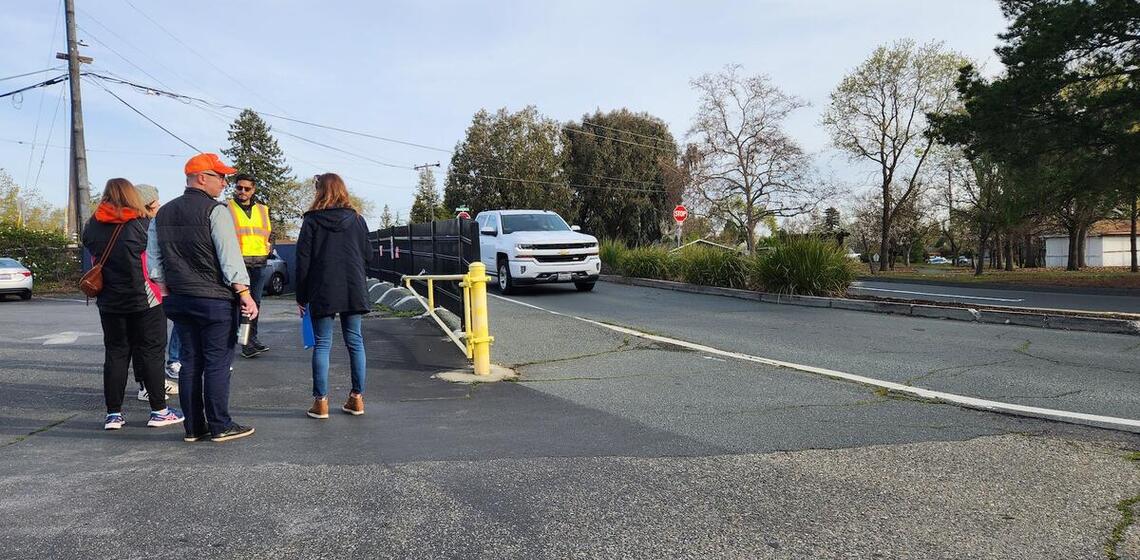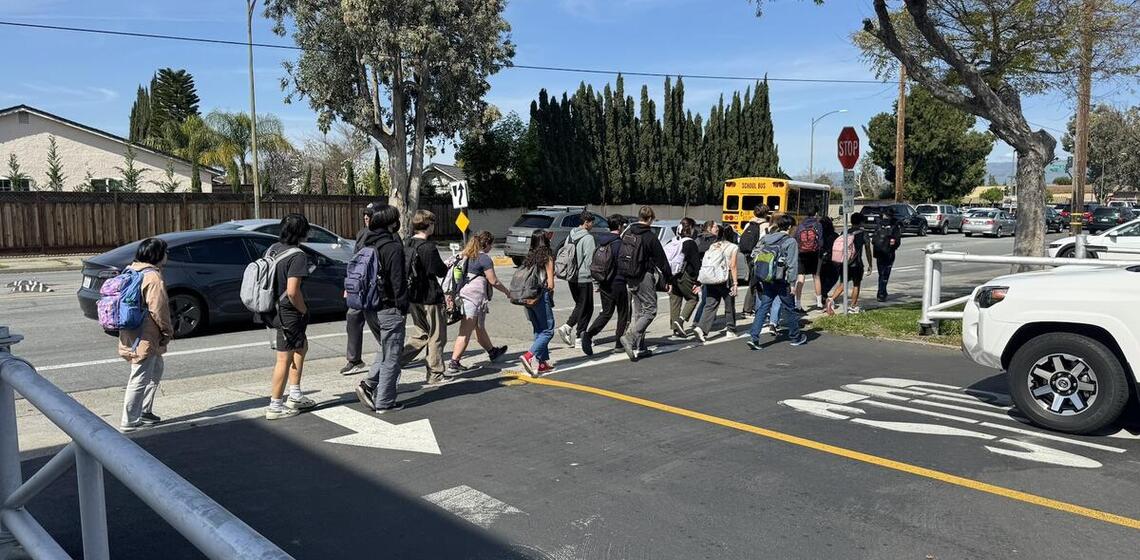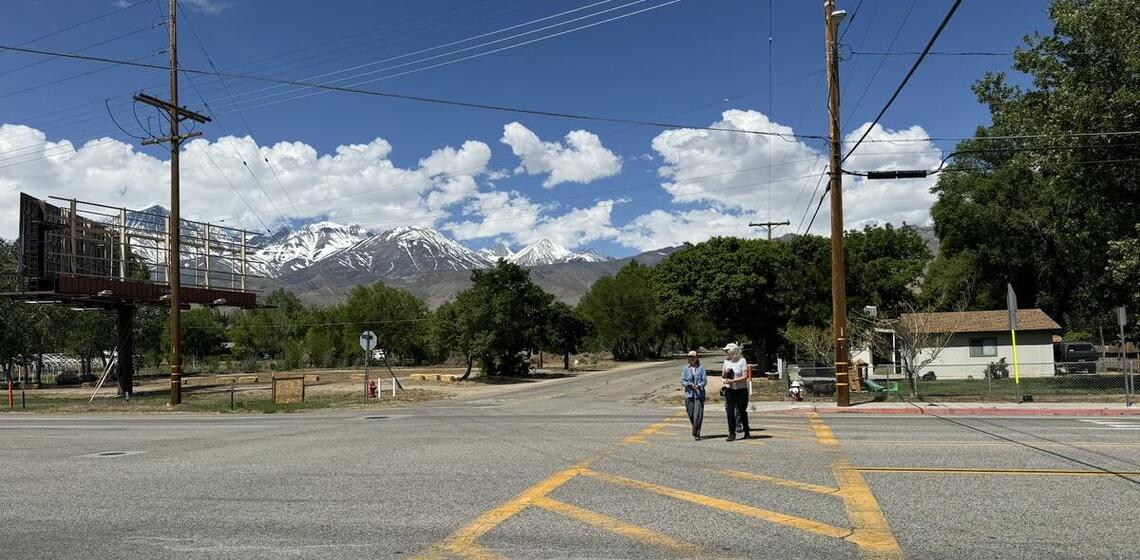Complete Streets Safety Assessment Program
SafeTREC offers free technical assistance to communities across California to make safe spaces for people to walk and bike. This year, the Complete Streets Safety Assessment program offers two unique tracks to better support communities’ safety needs.
These programs are free and available to communities across California. Specific eligibility varies by program and includes cities and public schools/colleges with a population greater than 2,500, all counties, and all Federally Recognized Tribes.
The CSSA started in 1998 as a general Traffic Safety Assessment and was coordinated out of UC Berkeley TechTransfer. Over the next 20 years, the program prioritized different safety areas including active transportation, specific geographies, or target populations. In 2019, the CSSA moved to SafeTREC in alignment with the program’s emphasis to improve safety for all road users. Safe Speed Limits was initially developed as a technical assistance resource and is now expanding as a pilot program in 2025.
Funding for this program is provided by a grant from the California Office of Traffic Safety (OTS), through the National Highway Traffic Safety Administration (NHTSA).
Not sure which program is right for you? Explore our flowchart or contact us at safetrec@berkeley.edu.
Complete Streets Safety Assessment (CSSA)
The CSSA is a comprehensive transportation safety assessment that focuses on pedestrian and bicycle safety. The assessments help eligible communities identify and implement traffic safety solutions that lead to improved safety for all users of California’s roadways. By participating, your community will gain expert insights into designing and implementing traffic safety solutions that protect all road users.
This year, the CSSA will partner with 12 communities throughout California to identify and implement traffic safety solutions that lead to improved safety for all users.
Applications are now closed for the 2025 CSSA. If you would like more information about the program, or have questions, please contact us at safetrec@berkeley.edu.
Our team will work in the following communities this year:
-
City of Bishop
-
City of Corona
-
City of McFarland
-
City of Riverside
-
City of Sonoma
-
City of Tustin
-
City of Wildomar
-
Contra Costa County
-
CSU Monterey Bay
-
El Cerrito/Richmond Annex
-
Millbrae
-
Pit River Tribe
Frequently Asked Questions
What does a Complete Streets Safety Assessment (CSSA) include?
Each selected site will be assigned a team of safety experts who will conduct an overview of the Safe System Approach and provide a review of crash history, a summary of current plans and policies, and a field audit of selected locations in the community. These findings will inform suggestions for policies and infrastructure physical improvements that could enhance motor vehicle, pedestrian, bicycle, and transit safety and accessibility. This team of safety experts will summarize these findings into a comprehensive report for each site.
Why should I apply for the CSSA?
The CSSA helps local agencies in their planning for traffic safety projects for people walking and biking. Communities may leverage the objective technical expertise to support grant applications, and advocate for specific safety improvements in their community, or inform local plans and policies, e.g., capital improvement projects and pedestrian/bicycle master plans. It can also help local agencies and Tribes engage regional partners in active transportation planning, such as neighboring cities, counties, Caltrans, and other stakeholders, to discuss joint opportunities for enhancing safety for all users of public and Tribal roadways.
Who is eligible for the CSSA?
-
Cities with populations greater than 2,500
-
Public schools and colleges
-
All counties and Federally Recognized Tribes in California
What follow-up support does SafeTREC offer former CSSA sites?
SafeTREC will host a 2025 Peer Exchange series later this spring/summer. More information to come!
Since 2023, SafeTREC has hosted peer exchanges for former CSSA communities to support them as they work to implement the suggestions identified during their assessment. During each session, participants were introduced to the topic, networked with peers, and were invited to share successes and challenges encountered as they work to make walking and biking safer in their communities.
- 2024 Peer Exchange: Funding and the Importance of Public Involvement in Implementing Suggestions. Philip Soares, Traffic Engineer with the City of Modesto shared his agency’s experiences implementing safety improvements as suggested in their CSSA report, the challenges they faced and how they overcame them, and how they used the final report to gain funding and engage the public. Access the CSSA Peer Exchange Summary for insights, learnings, and highlights shared from the discussion.
- 2023 Peer Exchanges: Implementing Complete Streets Safety Assessment (CSSA) Improvements. SafeTREC launched two online peer exchange sessions on how local agencies are successfully implementing complete streets safety improvements to make walking, biking, and rolling safer in their communities. These peer exchanges were designed to support agencies as they work to implement safety improvements as suggested in their CSSA final reports.
What is the history of the CSSA?
Traffic, Pedestrian, Bicycle, Rural, and Complete Streets Safety Assessments have been funded by grants from the California Office of Traffic Safety (OTS), through the National Highway Traffic Safety Administration (NHTSA) since 1998. The history of the Safety Assessment Program is as follows:
-
222 Traffic Safety Assessments (TSA) conducted 1998 through 2015
-
88 Pedestrian Safety Assessments (PSA) conducted 2007 through 2015
-
6 Bicycle Safety Assessments (BSA) conducted 2012 through 2015
-
6 Combined Pedestrian and Bicycle Safety Assessments conducted 2012 through 2015
-
10 Rural Safety Assessments (RSA) conducted 2013 through 2015
-
112 Complete Streets Safety Assessments (CSSAs) conducted 2015 through 2024
-
51 Tribal Transportation Safety Assessments (TTSAs) conducted 2015 through 2023
Safe Speed Limits Assessment (Safe Speed Limits)
The Safe Speed Limits Assessments (Safe Speed Limits) is a pilot program designed to enhance vulnerable road user safety by providing communities with technical assistance for context-sensitive speed limit setting in accordance with new California state laws. Guided by the Safe System Approach, this project builds off SafeTREC’s California Safe Speeds Toolkit, which details speed limit setting flexibilities under the existing California framework.
This year, Safe Speed Limits will partner with four California City or County implementing agencies (e.g., public works or transportation departments) to identify opportunities to modify speed limits and improve road safety for all road users.
Applications are now closed for the 2025 Safe Speed Limits. If you would like more information about the program, or have questions, please contact us at safetrec@berkeley.edu.
Our team will work in the following communities this year:
-
City of Menifee
-
City of Napa
-
City of South San Francisco
-
City of Westminster
Frequently Asked Questions
What does a Safe Speed Limits Assessment (Safe Speed Limits) include?
When a City or County implementing agency applies and is approved for Safe Speed Limits, a team of safety experts in the fields of traffic engineering and planning are assigned to conduct the study with the community. In collaboration with the community, the experts identify corridors that could qualify for speed limit reductions under AB 43, AB 1938, and AB 321. The expert team will review Statewide Integrated Traffic Records System (SWITRS) and Office of Traffic Safety (OTS) data pertaining to speed-related crashes with a focus on fatal and serious injury crashes, and review the City or County’s current and previous Engineering and Traffic surveys (E&TS) to speed limit reduction possibilities for identified corridors. An in-person site visit is conducted by a member(s) of the team at identified corridors to observe speeds, roadway design and infrastructure, and user behavior for potential safety improvements. The experts then prepare a report summarizing their findings and suggestions for revised speed limits on particular corridors.
Why should I apply for Safe Speed Limits?
Safe Speed Limits is designed to enhance vulnerable road user safety by providing communities with technical assistance for speed limit setting in accordance with new California state laws. If unsafe speeds are impacting your community, consider applying for the Safe Speed Limits program.
Who is eligible for Safe Speed Limits ?
At this time, only City and County implementing agencies, such as the department of transportation or department of public works, are eligible. We hope to expand this program to serve a broader audience in future years.
Resources
-
California Safe Speeds Toolkit (2023): This toolkit is intended to help local jurisdictions across California set safer speed limits that accommodate all road users using Safe System principles. This toolkit consolidates key research on Safe Speeds, provides details on speed limit setting flexibilities under the existing California framework, highlights select speed limit setting case studies from cities across California, and points local jurisdictions toward next steps in pursuing safe speed limit setting.
-
Complete Streets and their effect on increasing safety for all road-users (2018): This research brief from UC Berkeley SafeTREC highlights the Complete Streets concept and its effect on increasing safety for pedestrians and bicyclists in communities.
-
A Technical Guide for Conducting Traffic Safety Assessments for California Communities (2015): This document describes the California Traffic Safety Assessments (TSA) process and provides guidelines for safety evaluators to conduct these assessments. It synthesizes best practices and research on traffic safety applications. This guidebook targets California Communities, but the methods described are applicable for other states.
-
A Technical Guide for Conducting Pedestrian Safety Assessments for California Communities (2013): Pedestrian Safety Assessments (PSAs) are one approach to improving pedestrian safety within California communities, because a PSA enables local agencies to systematically identify the issues and problems and effective remedial options. This document describes the California PSA process and provides guidelines for evaluators to conduct PSAs. While this book is targeted for application within California, the methods described are applicable outside California. Users of this guidebook outside California should substitute national or locally adopted standards, practices, or references as needed.
-
A Technical Guide for Conducting Bicycle Safety Assessments for California Communities (2014): Improving bicycle safety has become increasingly important to California communities, yet remains a challenge for many agencies to accomplish. A Bicycle Safety Assessment (BSA) helps identify safety concerns and offers suggestions for improvement. This document describes the California BSA process and provides guidelines for BSA evaluators to conduct BSAs. It synthesizes current best practices and research on bicycling safety and provides guidelines for bicycling safety applications tailored to meet the needs of local communities in California.
Questions about the CSSA Program?
Please contact us at safetrec@berkeley.edu if you would like more information about the CSSA program or have any questions.



